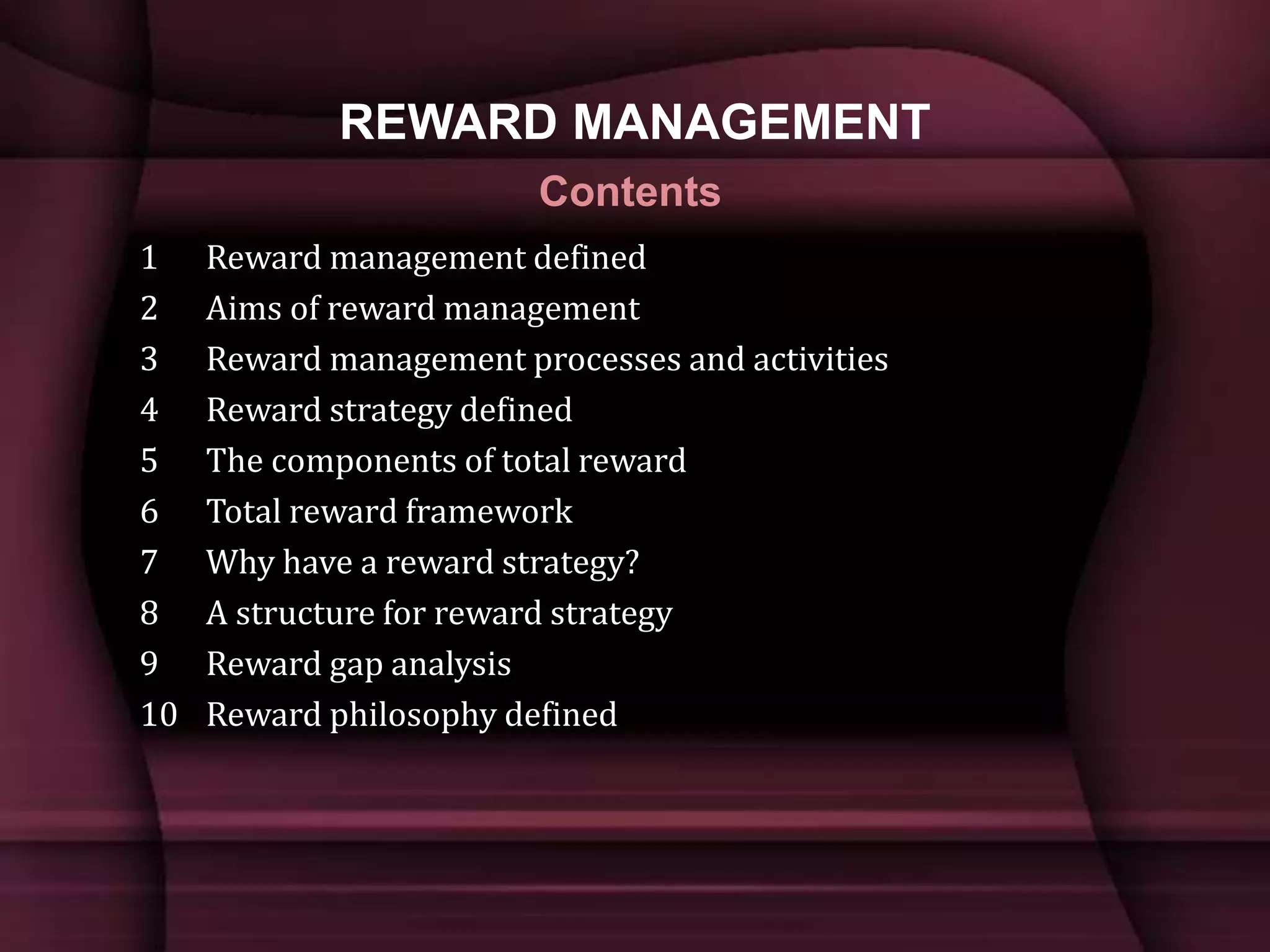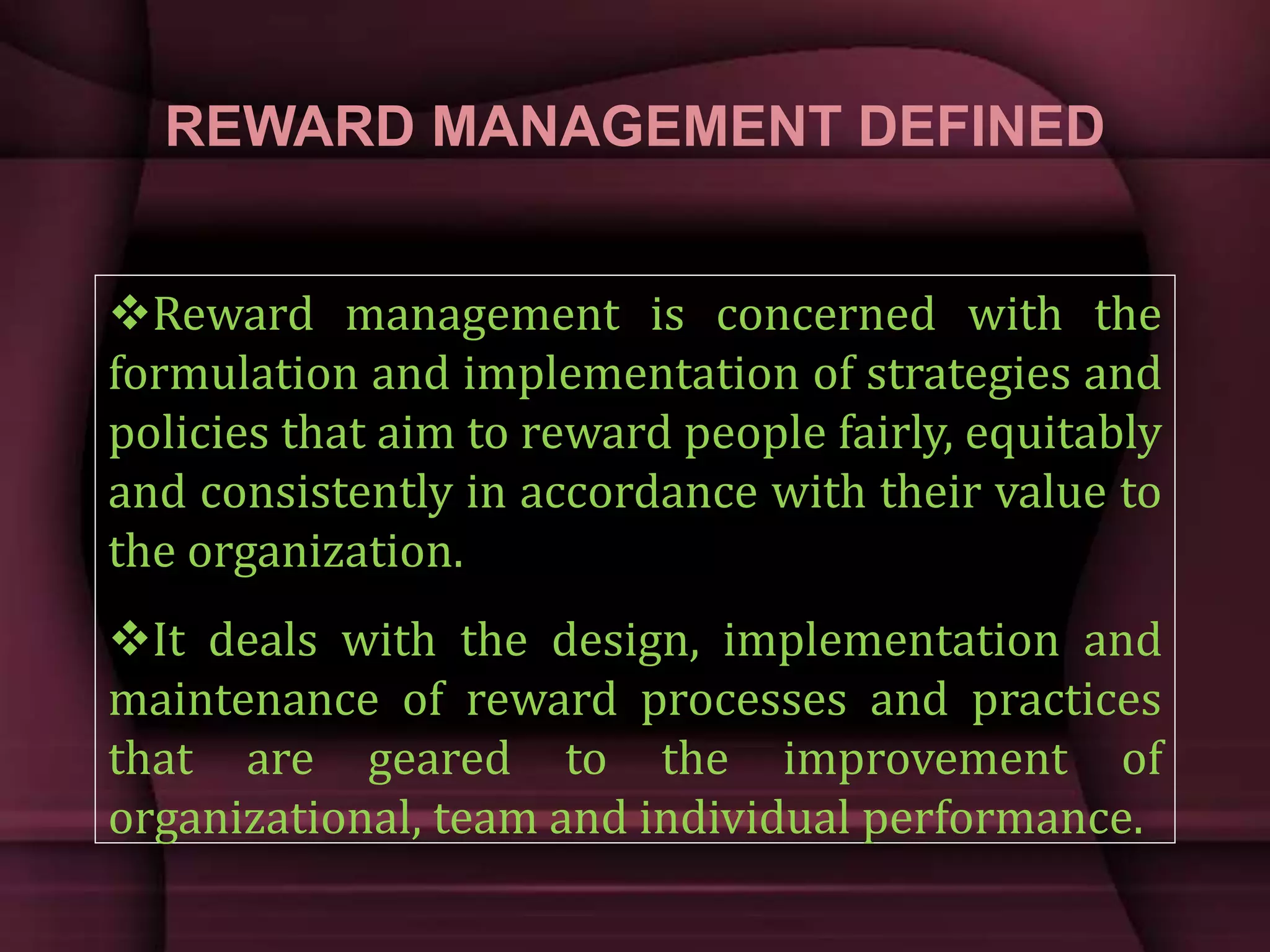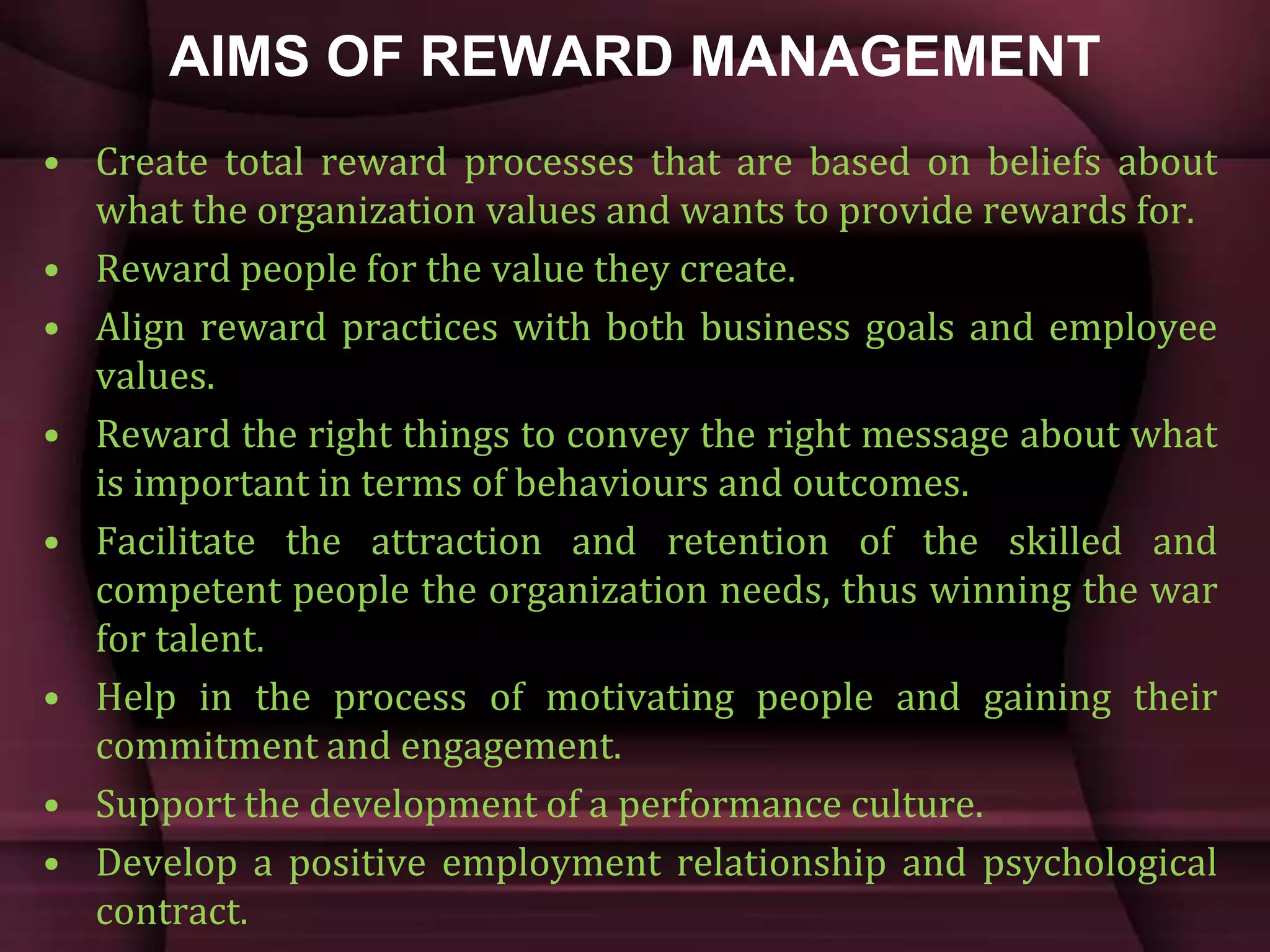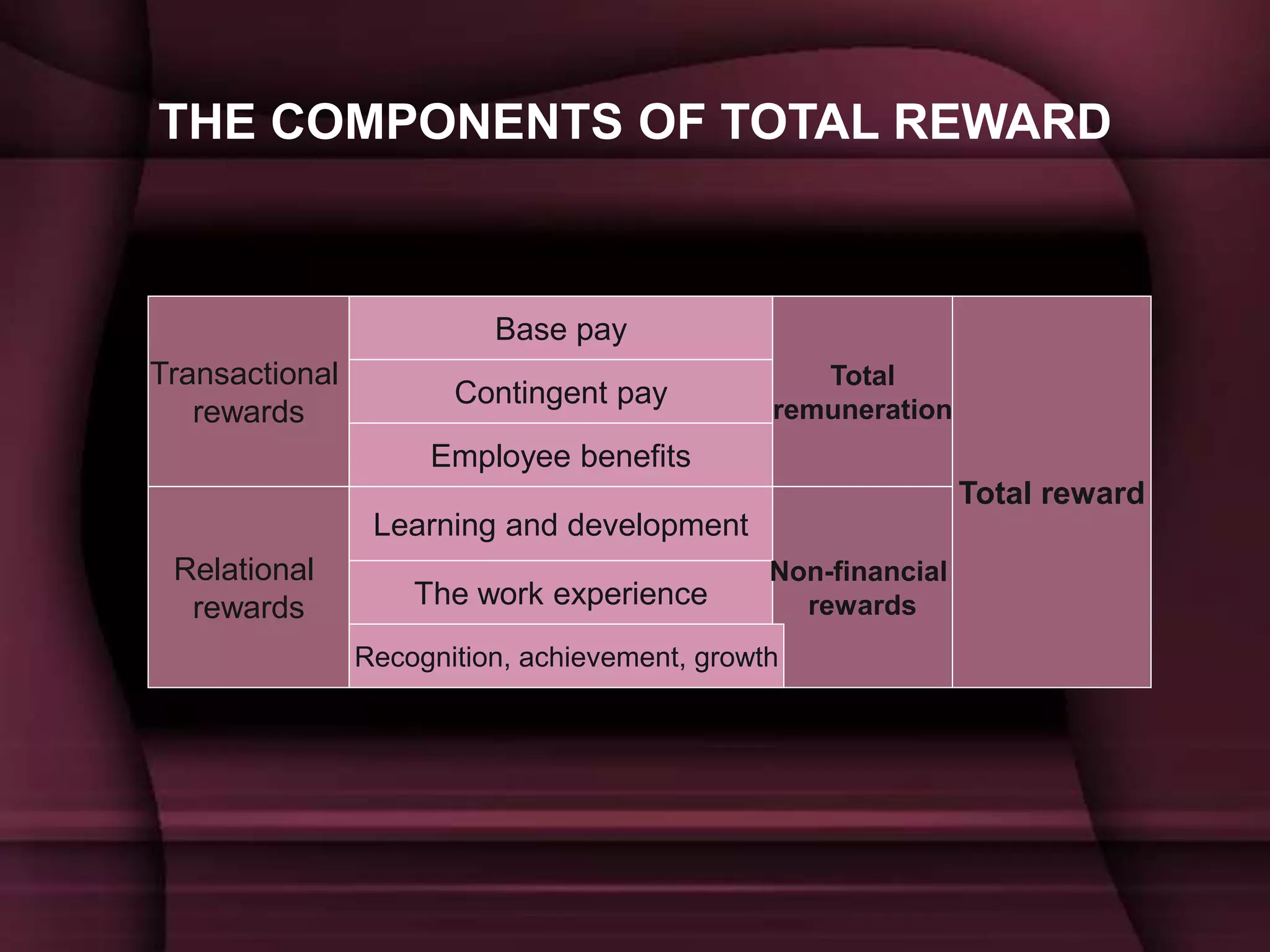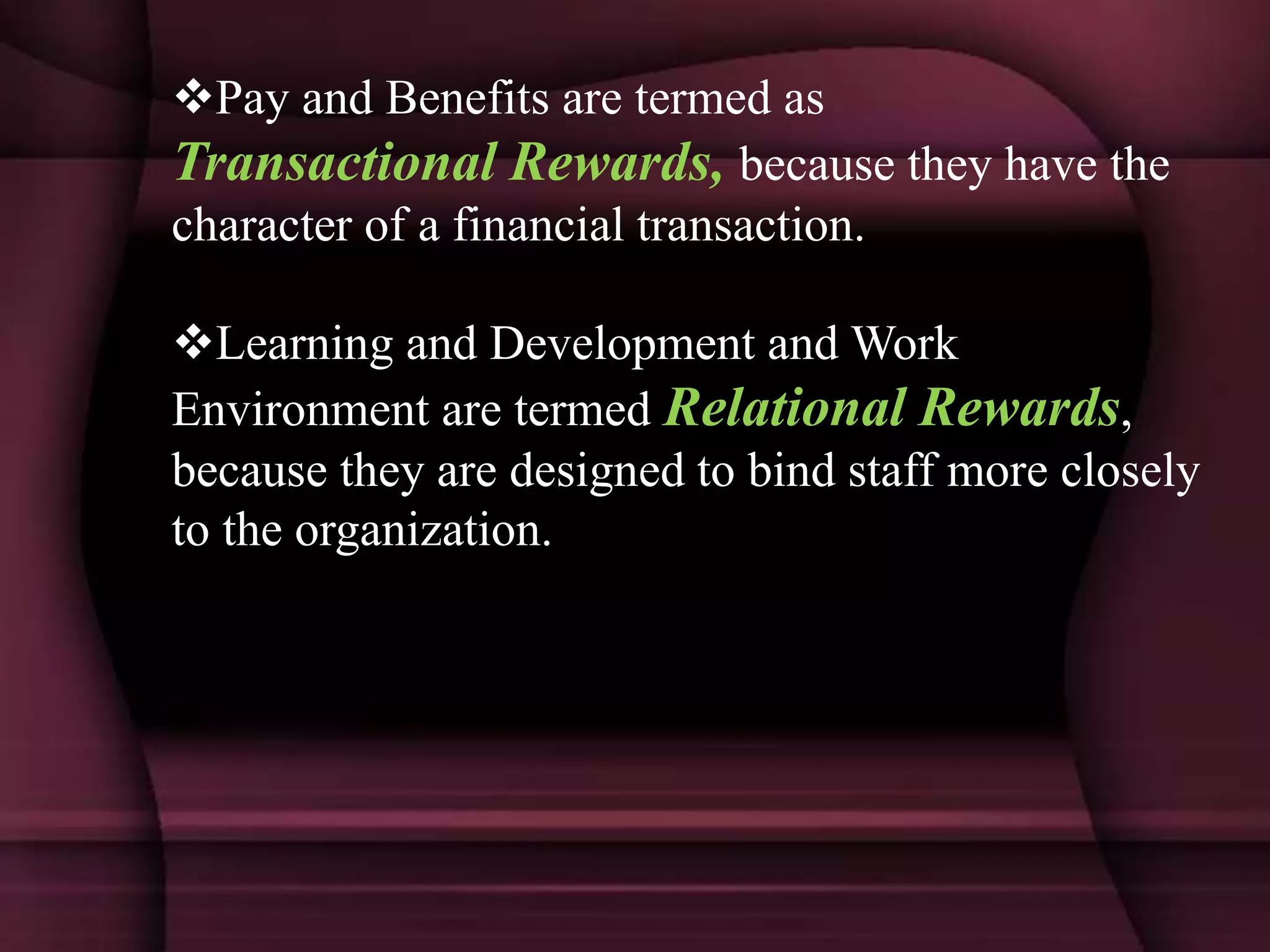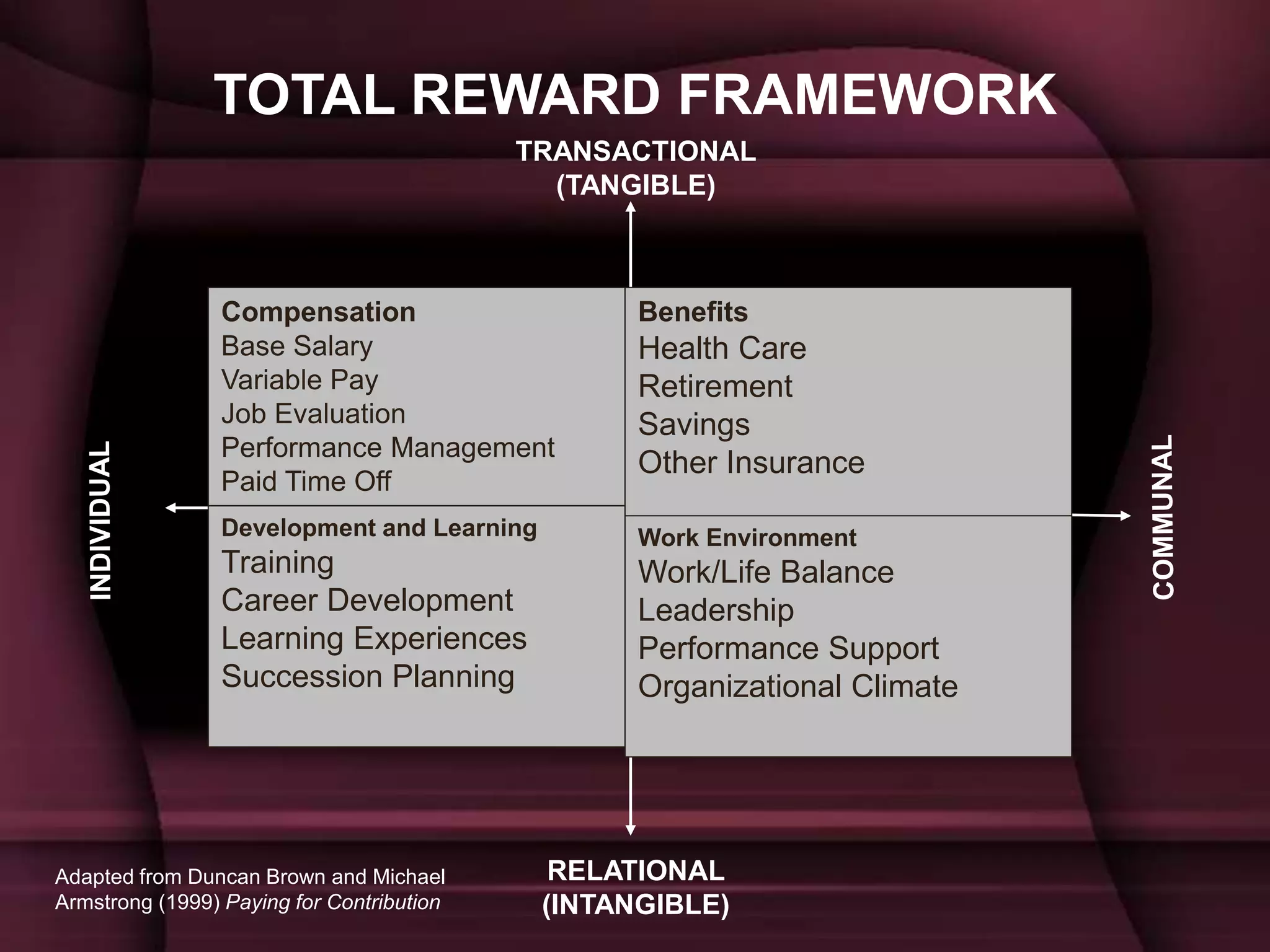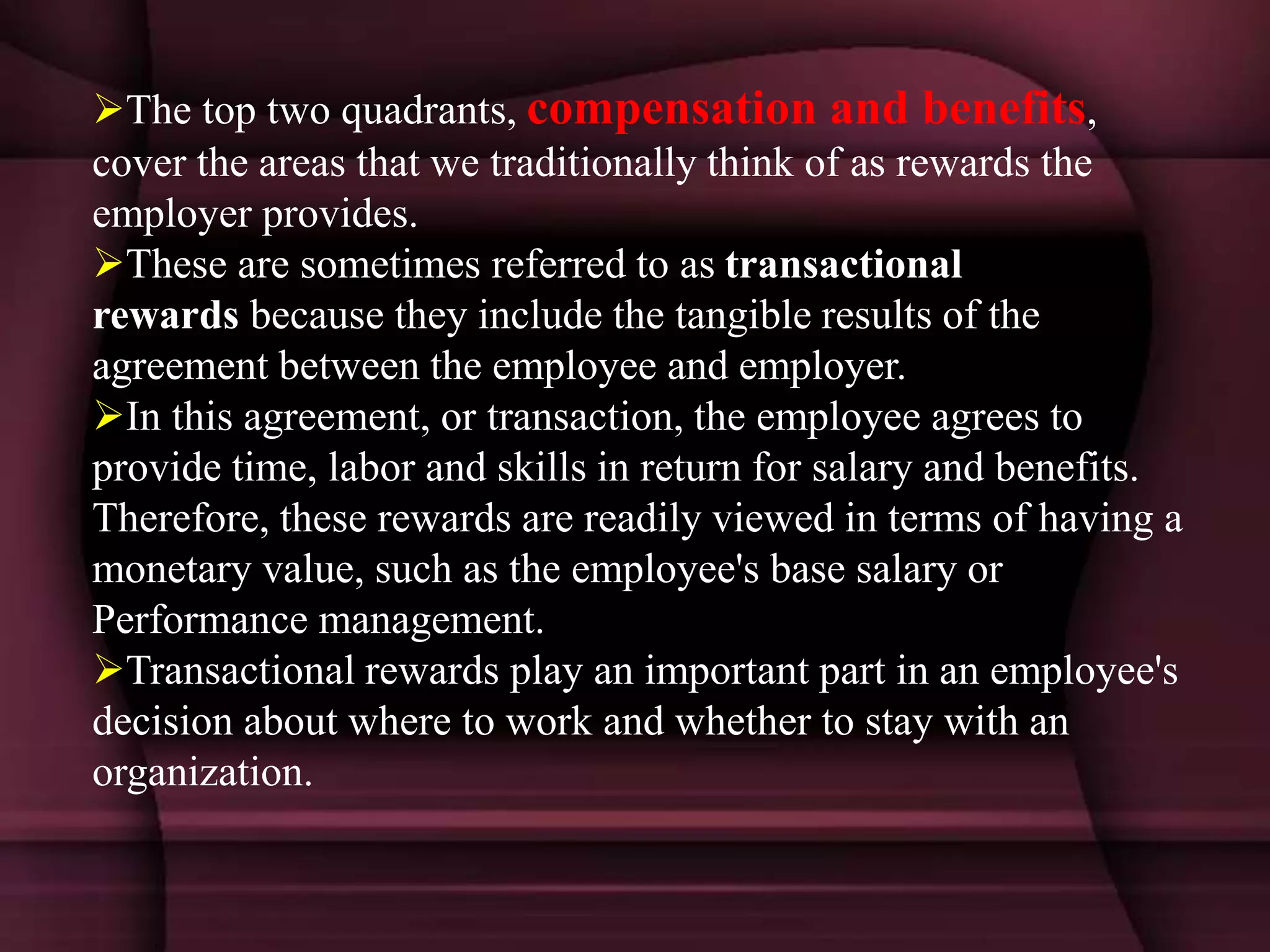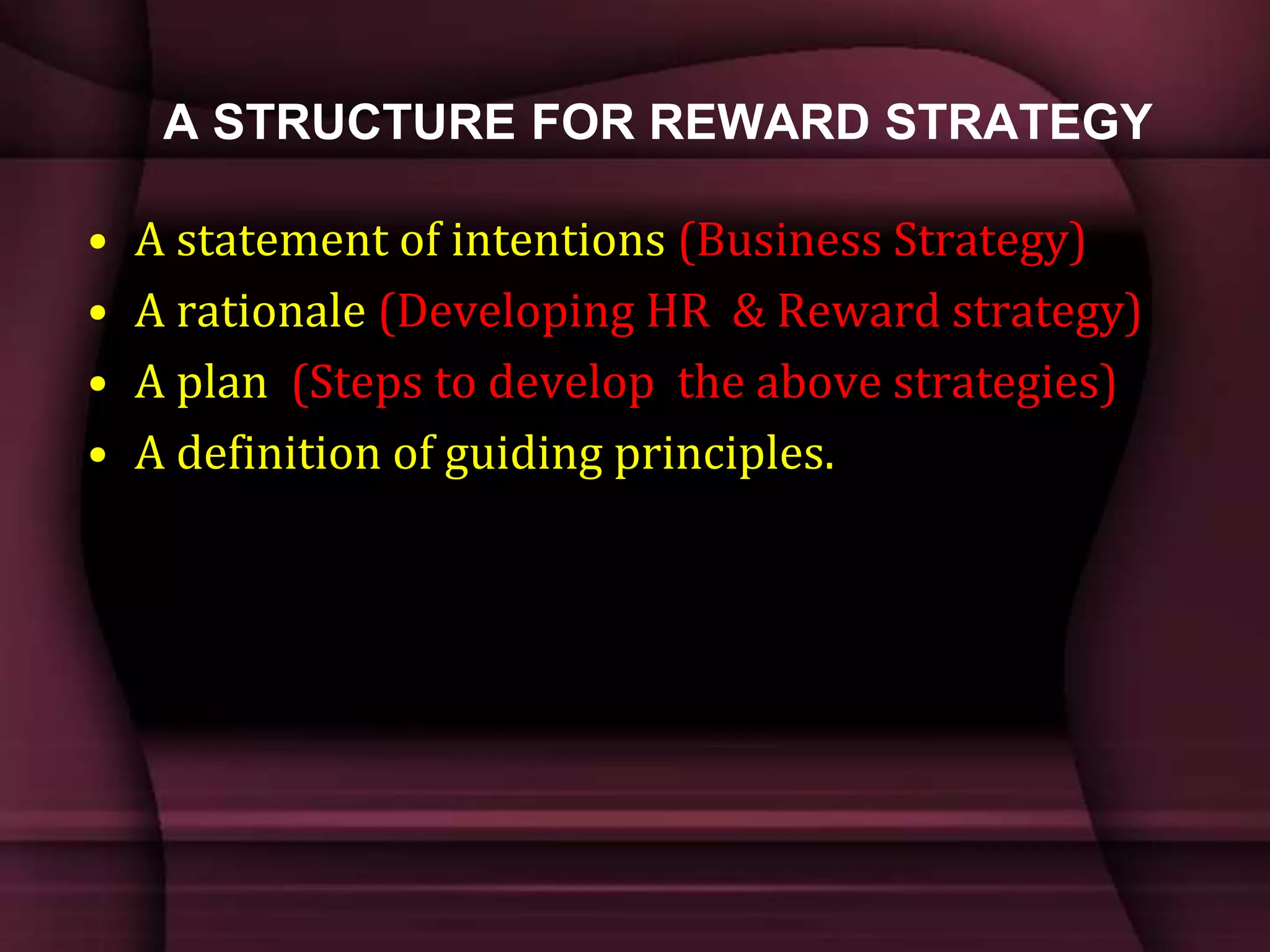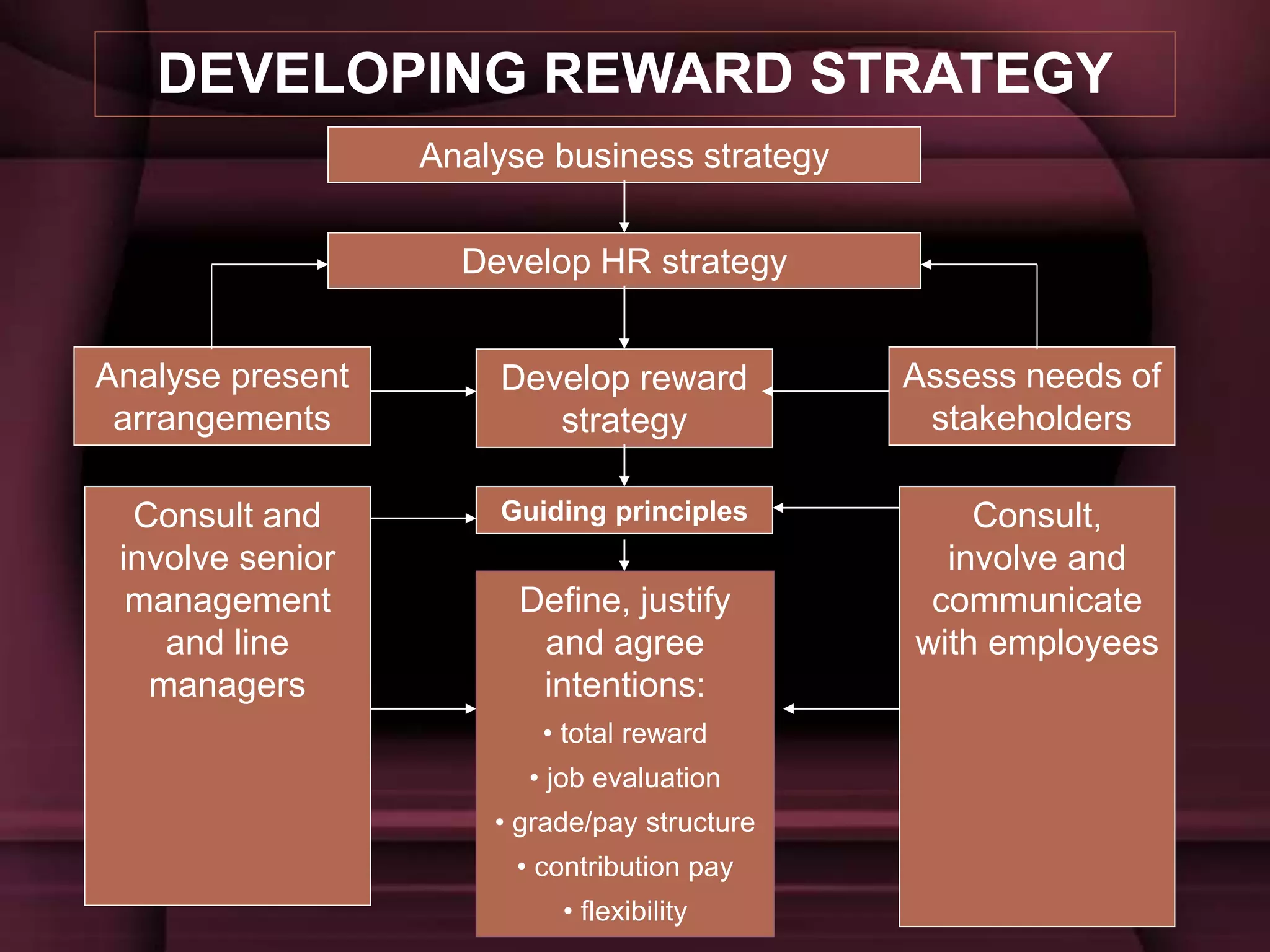This document discusses reward management and developing a reward strategy. It defines reward management and its aims, which include attracting and retaining skilled employees, motivating performance, and aligning rewards with business goals. The key components of a total rewards package are discussed, including transactional rewards like pay and benefits, and relational rewards like learning opportunities and work environment. Developing an effective reward strategy requires analyzing business and HR strategies, consulting stakeholders, and establishing guiding principles based on an organizational reward philosophy.
